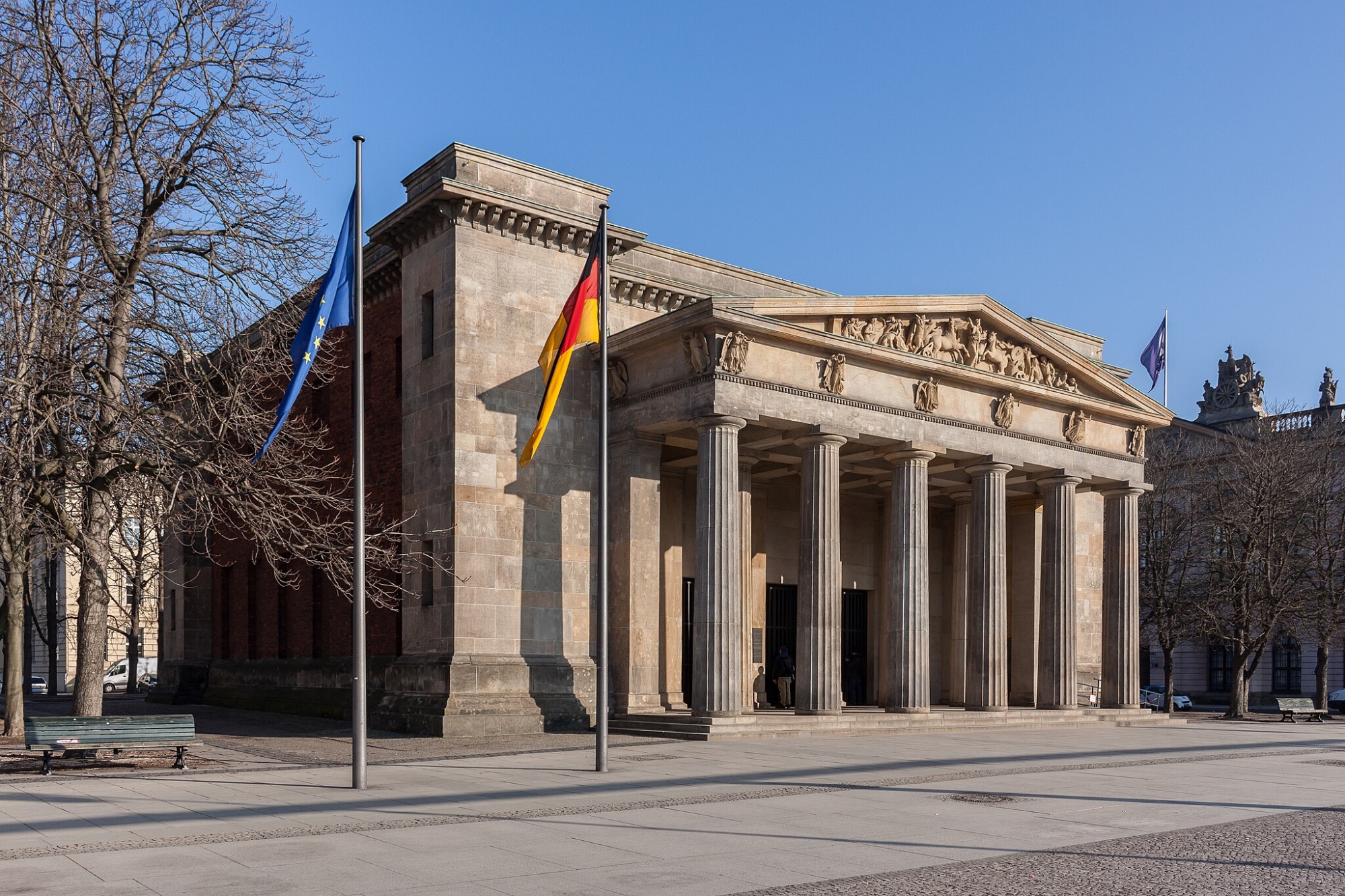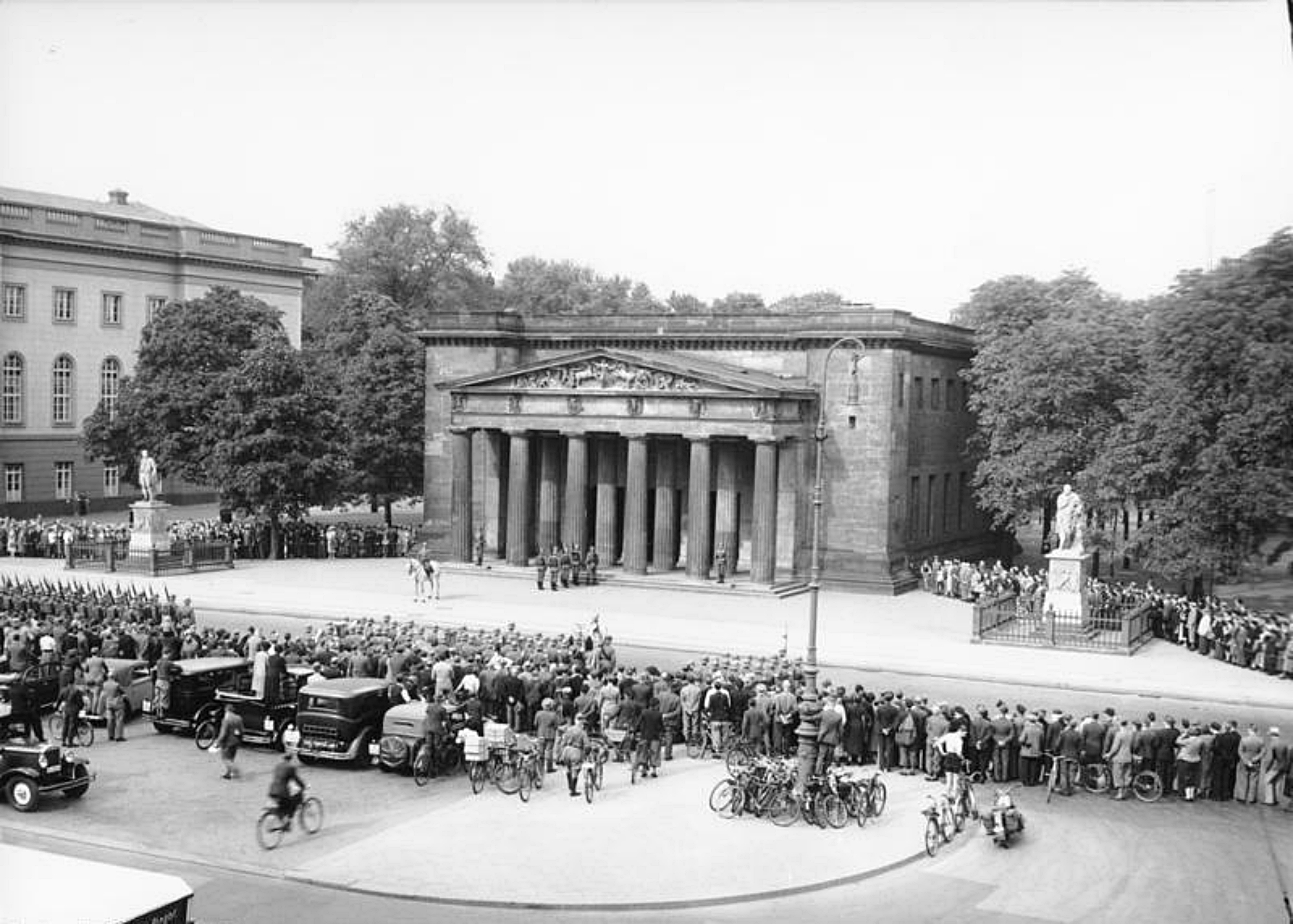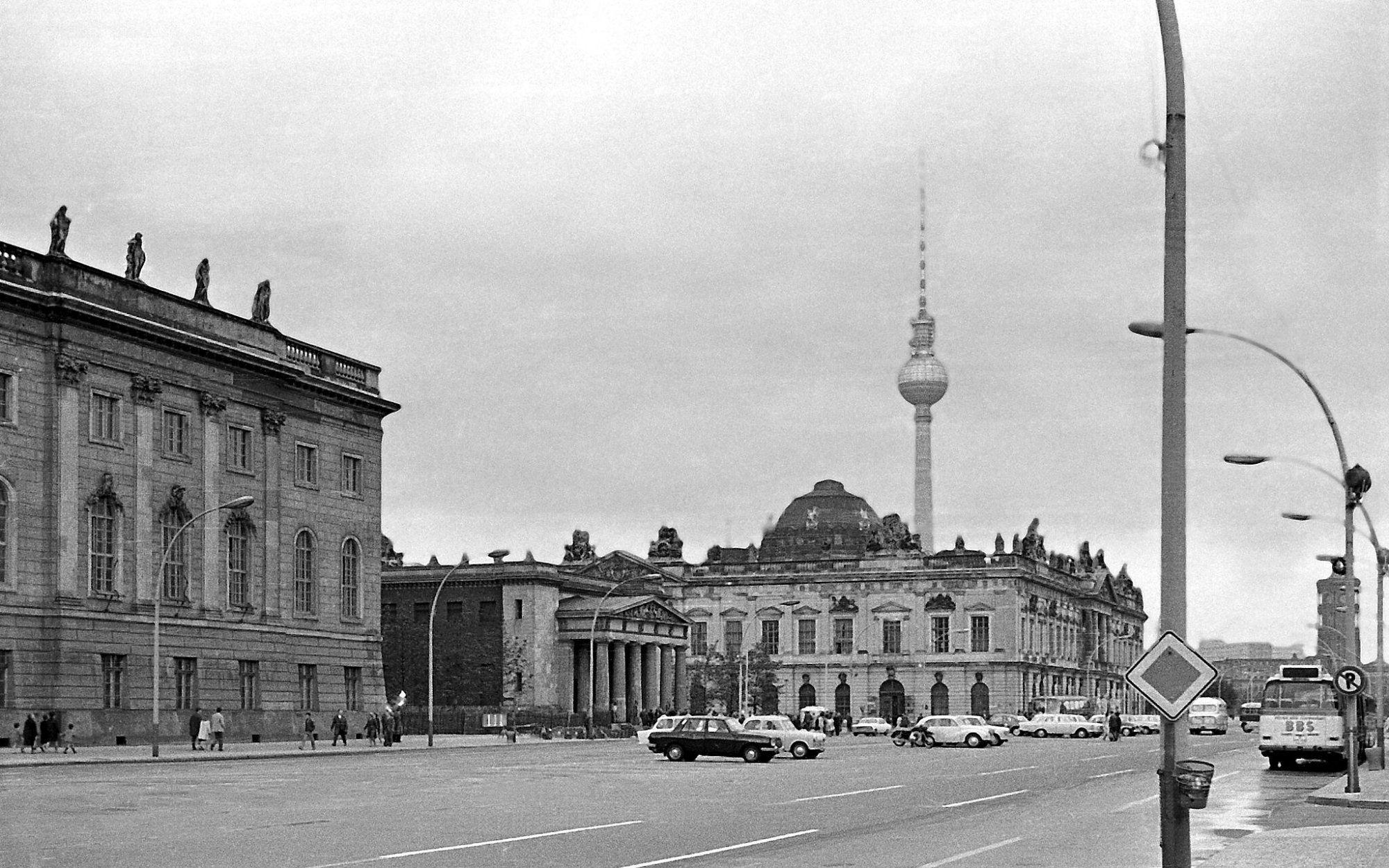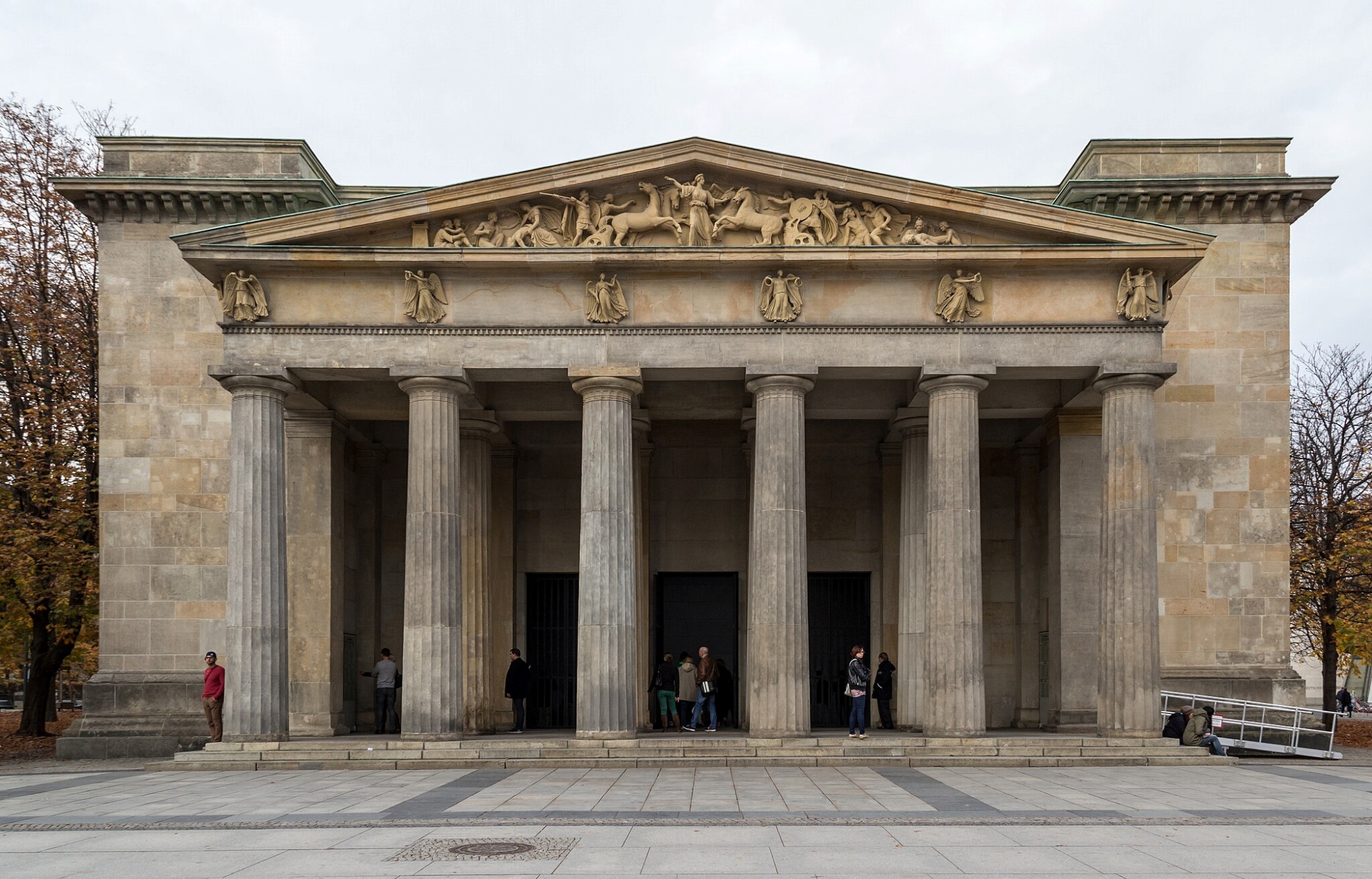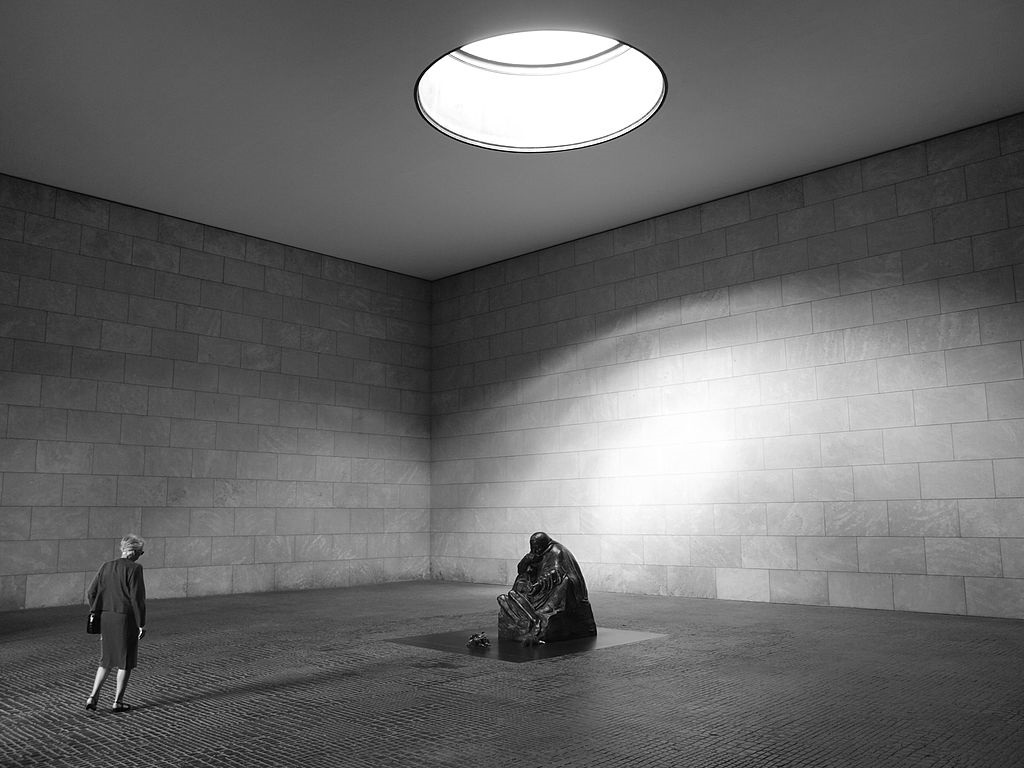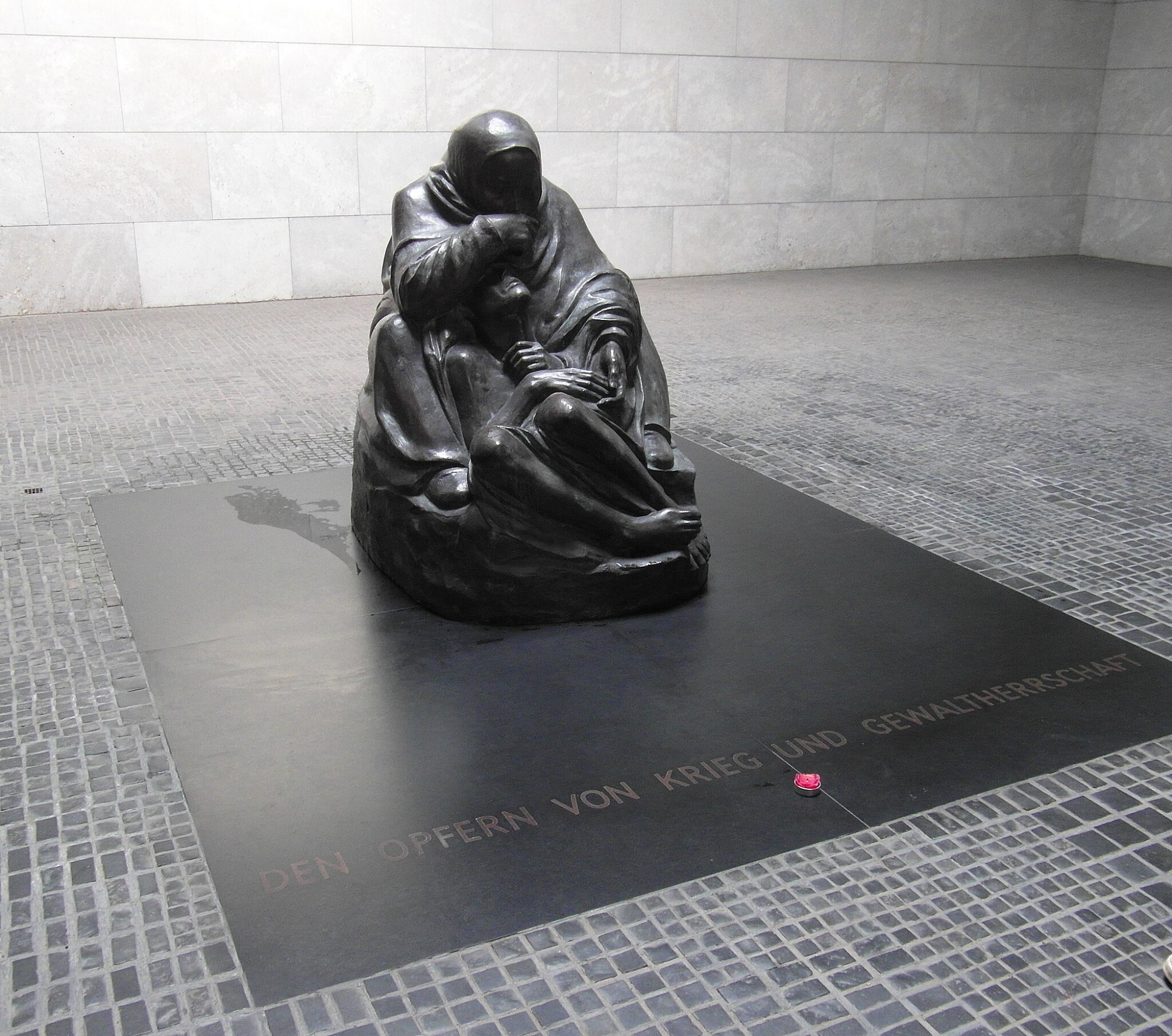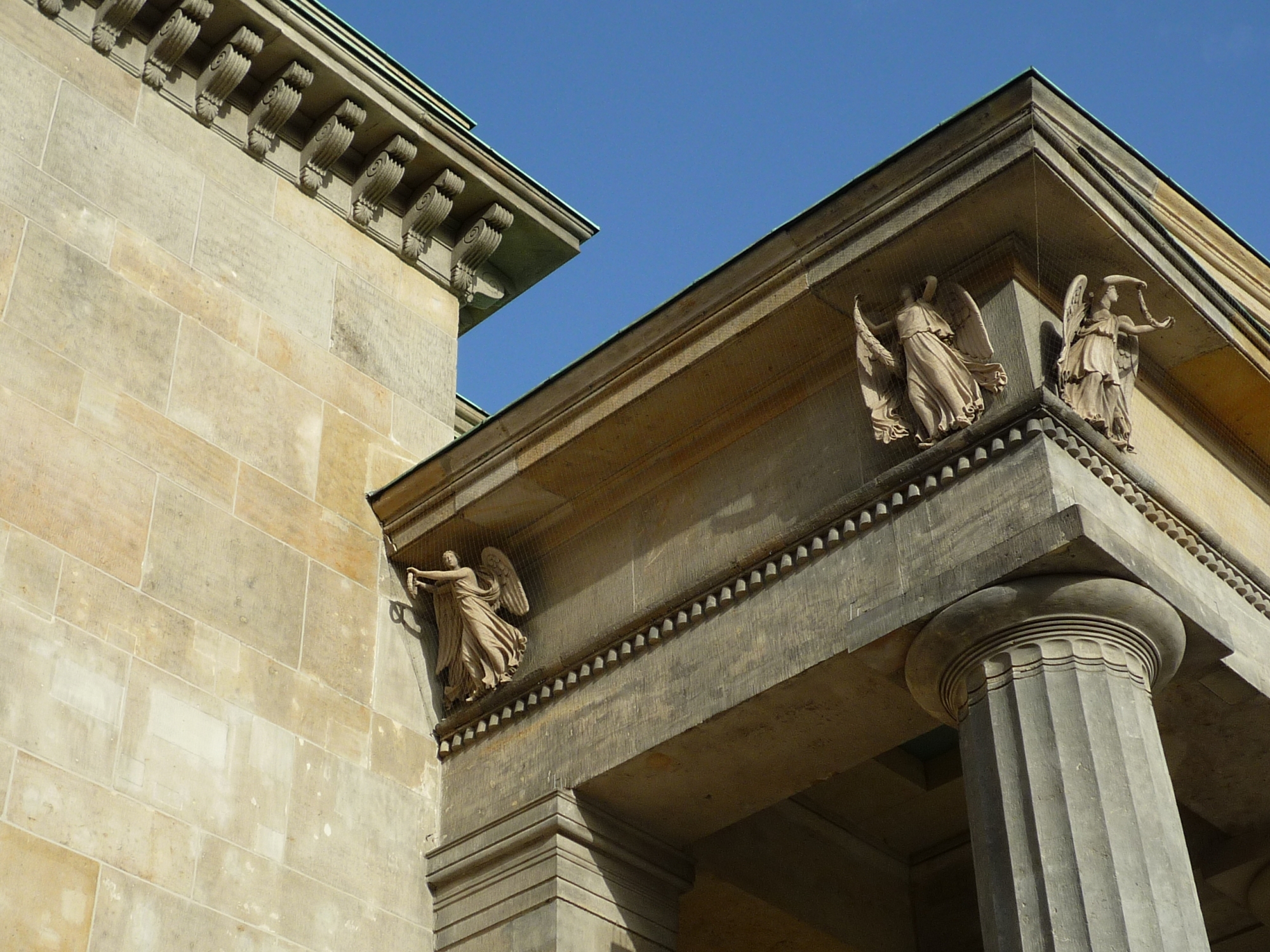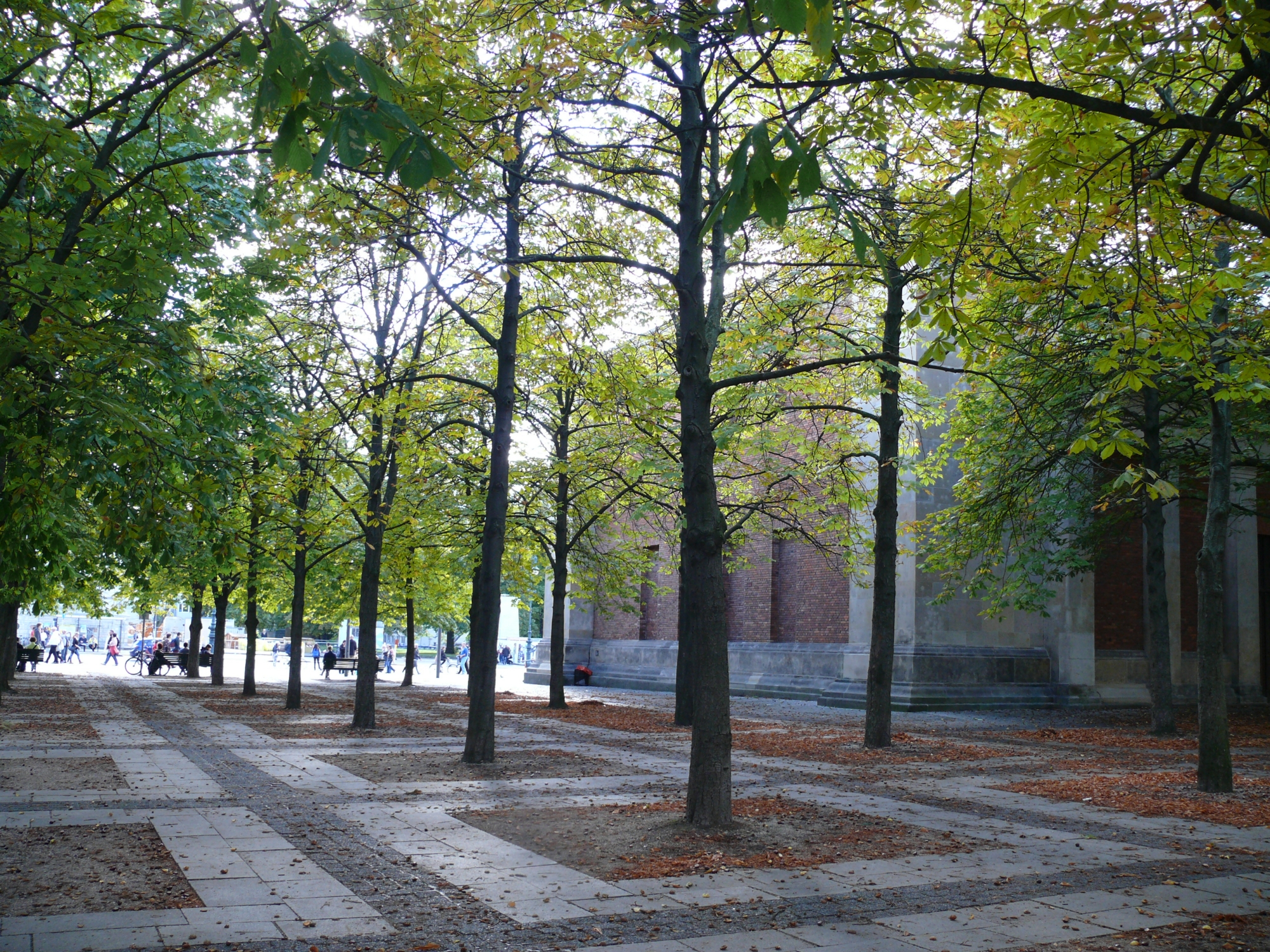The New Reverse (Neue Wache) is one of the most important buildings not only in Berlin, but also in the whole of Germany. It serves as a memorial to the victims of war and tyranny and is the Central Memorial of the Federal Republic of Germany (German: Zentrale Gedenkstätte der Bundesrepublik Deutschland)
This classicist building is located in Berlin, in the Mitte district, on Unter den Linden avenue. It was built between 1816 and 1818 and is the first work by Karl Friedrich Schinkel to be realised on the Berlin site. It is also one of the most important buildings of German classicism
The new Rectory around 1900. Public domain, via Wikimedia Commons
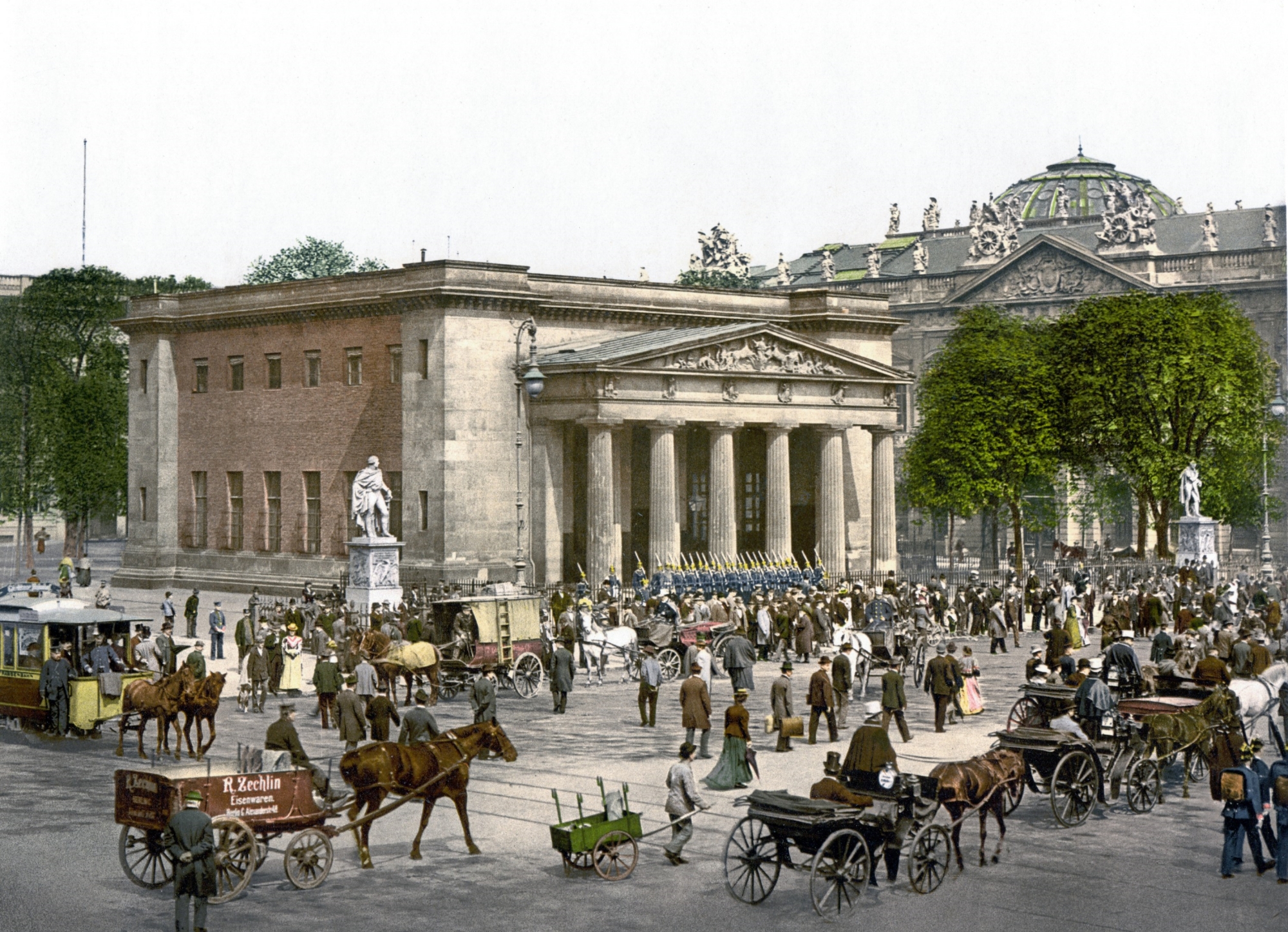
The edifice was commissioned by King Friedrich Wilhelm III as a post of the royal guard and also a form of commemoration for soldiers killed in the Napoleonic Wars. The building served as the guard post of the main and royal guards (German: Haupt- und Königswache) until the fall of the monarchy in 1918. The building was chosen to house a national memorial to soldiers killed in the First World War. In November 1929, an architectural competition was announced for the transformation of the New Rectory into a memorial. In July 1930, the winner of the competition was Heinrich Tessenow. Heinrich Tessenow had a round skylight added to the ceiling of the building, and a 2-metre high black granite pedestal was erected in the centre of the room, on which a silver wreath was placed on gold and platinum stands, the work of sculptor Ludwig Gies. The pedestal was flanked by two narrow bronze candelabra. on 2 June 1931, the rebuilt New Reverse was opened as the Prussian State War Memorial. The appearance of the building’s interior, which presented itself as an empty, abstract space, evoked extreme feelings
The interior of the building in 1931. Bundesarchiv, Bild 102-11786 / CC-BY-SA 3.0, CC BY-SA 3.0 DE, via Wikimedia Commons
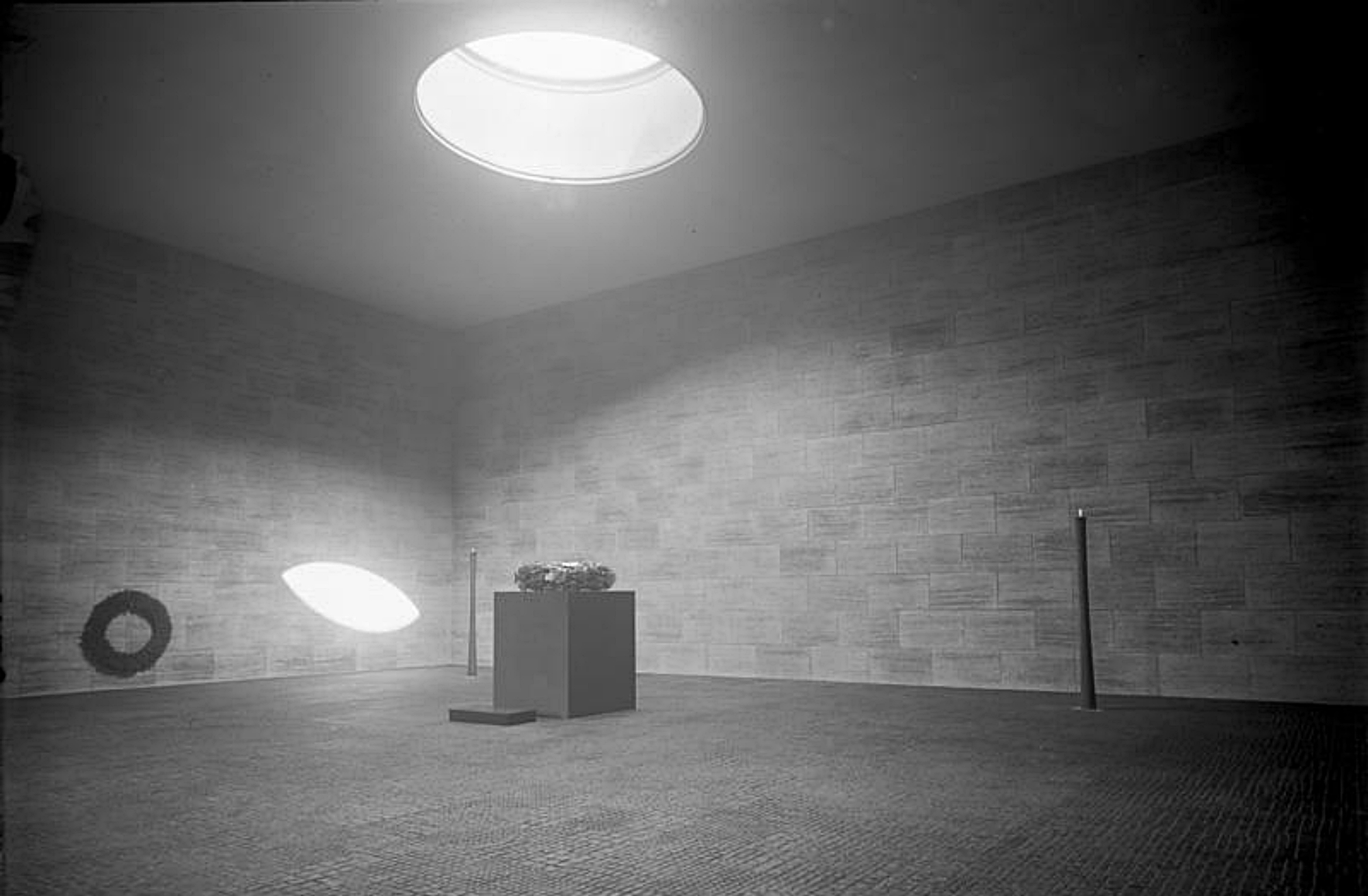
After the Nazis came to power, the building continued its function as a memorial to the fallen of the First World War and also served as a backdrop for speeches and re-enactments organised by Adolf Hitler. During the Second World War, the New Reverse was severely damaged, and in the following years, the dilapidated building deteriorated further due to lack of protection. The leadership of the ruling SED party in the GDR approved the renovation of the building in 1951, and in September 1956 the East Berlin magistrate decided to designate it as the Monument to the Victims of Fascism and the Two World Wars (German: Mahnmal für die Opfer des Faschismus und der beiden Weltkriege). Work to rebuild the building under the direction of architect Heinz Mehlan began the following year and continued until 1960. During this work, a bronze inscription was placed on the wall: Den Opfern des Faschismus und Militarismus (“To the victims of Fascism and Militarism”). In May 1960, the rebuilt New Rectory was officially opened as the Monument to the Victims of Fascism and Militarism (German: Mahnmal der Opfer des Faschismus und Militarismus). In 1969, the interior of the building was rebuilt, designed by the architect Lothar Kwasnitz. In the course of only six weeks of work, the black granite pedestal, damaged during the war, was removed and replaced by a green marble niche. A glass cube with an eternal flame was placed in the centre of the niche, in front of which was placed an urn with the ashes of an unknown soldier, surrounded by earth from the battlefields of World War II, and an urn with the ashes of an unknown anti-Nazi resistance fighter, surrounded by earth from the German concentration camps. A stone marquetry with the GDR emblem was placed on the wall behind the cube with the eternal flame. The opening of the building after the reconstruction took place on 6 October 1969, on the eve of the 20th anniversary of the GDR
The building in 1945. Bundesarchiv, Bild 183-M1205-329 / Donath, Otto / CC-BY-SA 3.0, CC BY-SA 3.0 DE, via Wikimedia Commons
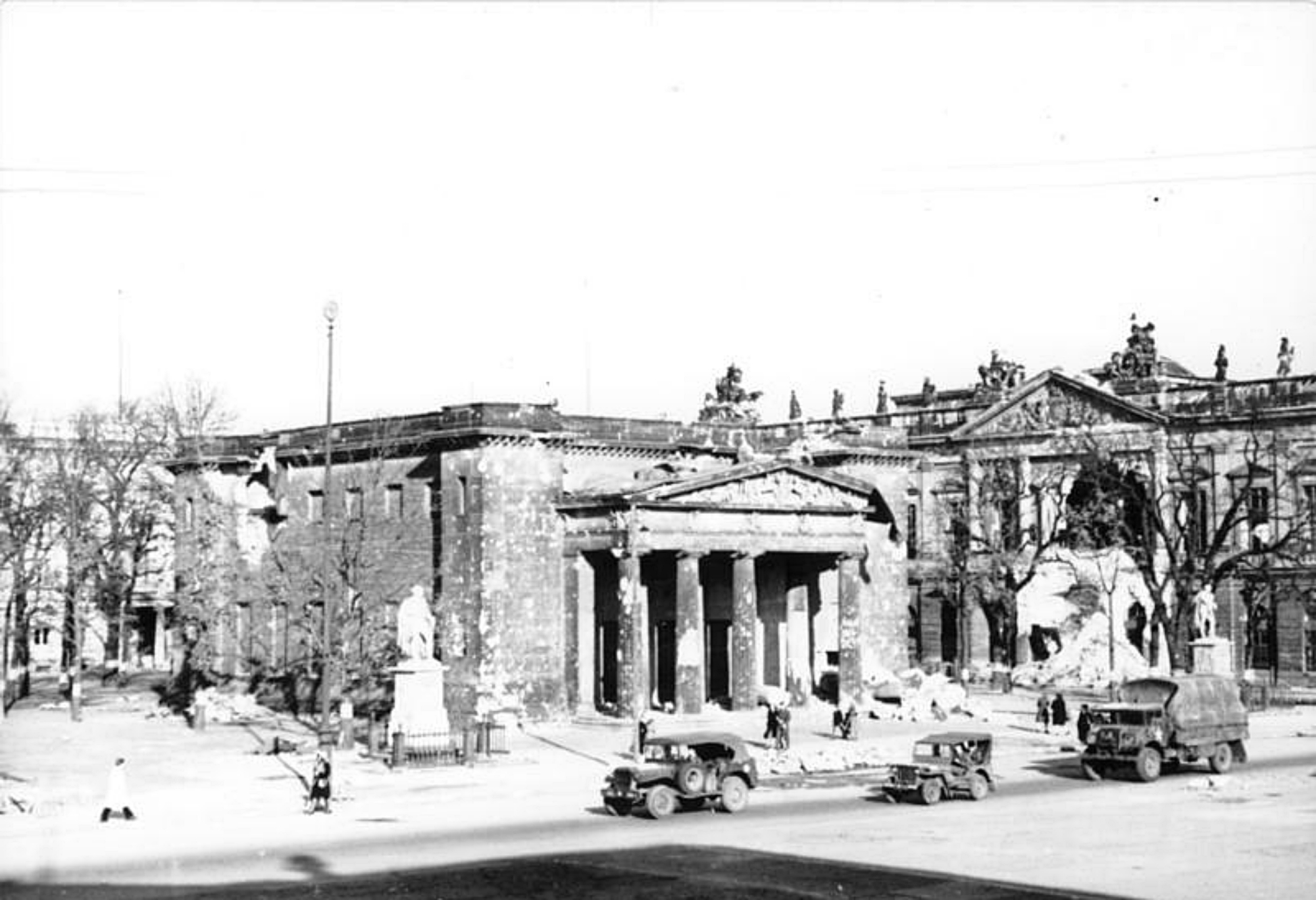
After the reunification of Germany, the inlay with the GDR coat of arms was removed from the interior of the New Reich in 1990, and the glass cube inside was handed over to the German Historical Museum. The building was then designated by government decision as the Central Memorial of the Federal Republic of Germany (Zentrale Gedenkstätte der Bundesrepublik Deutschland). Accordingly, the interior of the building was renovated in 1993 and a plaque with the inscription was placed in the middle of the building above the urns: Den Opfern von Krieg und Gewaltherrschaft (in Polish: ‘To the Victims of War and Tyranny’), while an enlarged copy of the sculpture Mutter mit totem Sohn (in Polish: ‘Mother with her dead son’) by Käthe Kollwitz, made by Haarald Hacke, was placed on it. Kollwitz created this sculpture in 1937 to commemorate her son Peter, who died in Flanders during the First World War at the age of 18. on 14 November 1993, the New Rectory was officially opened after renovations. Since then, Wachbataillon soldiers have kept guard at the building every Volkstrauertag
When the New Reverse was completed, Karl Friedrich Schinkel designed the building’s surroundings, which included chestnut trees planted within the building at regular intervals. These trees are intended to increase the architectural impact of the free-standing edifice, as well as to act as a mediating element in relation to the surrounding buildings. Together with its counterpart, the Prinzessinnenpalais garden, planted with lime trees and located directly opposite, the grove forms the only green transversal axis in the course of Unter den Linden
Source: placeandsee.com
Read also: Architecture | Monument | History | Berlin | Germany | Interesting facts

